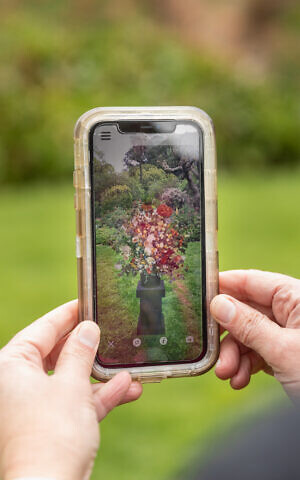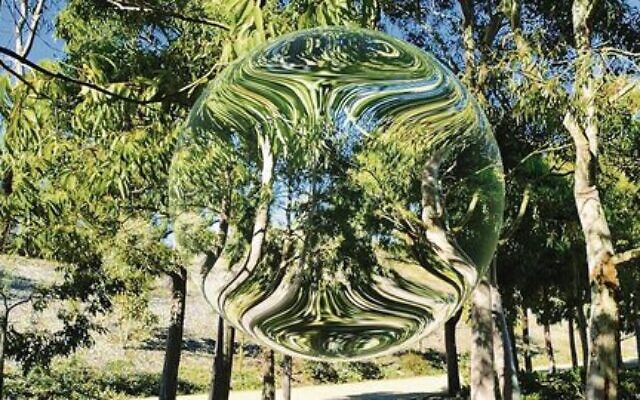Digitally making the invisible visible
An unprecedented augmented reality exhibition has come to the Royal Botanic Gardens Victoria, premiering simultaneously in 12 gardens around the world. Developed during the pandemic, Seeing the Invisible is co-curated by Hadas Maor and Tal Michael Haring.
When faced with restrictions, lockdowns and closures, the arts world was plunged into darkness. Productions were cancelled, gallery doors were closed, and music venues went silent. But, for the most part, people around the world were allowed to be outside. So why not bring art to the outdoors?
When COVID-19 broke out, the Jerusalem Botanic Gardens in partnership with the Outset Contemporary Art Fund created an exhibition. The idea was to create an open-space museum. No one wanted to give up on culture and art.
Seeing the Invisible allows attendees to engage with art via an app. As you wander around the gardens, an artwork will appear when you hold up your device at specific GPS coordinates.

“During the pandemic, people were relying much more on digital means of communication. It became an integral part of our lives,” co-curator Hadas Maor said over the phone from Israel.
“It was interesting to examine how it also penetrated the art world.”
While AR is not a new technology, the pandemic presented the right opportunity to use it in the art world, ensuring people could still access the arts in a safe way.
Despite the artworks being the same all around the world, they present differently due to their different environments.
“It is the same 13 works, but they look very different in each garden as the backdrop is different,” Maor explained.
“The device augments the work of art, but if there are people or different botanics in the background, it gives a totally different experience of the work.”
For the past 18 months, artists have been trying to enable people to access their works online – placing art digitally in the hands of the viewer.
In stark contrast, visitors to Seeing the Invisible have to be in the gardens physically to experience the artwork, even though it is viewed digitally. Maor explains this as a “phygital” experience.
For Tim Entwisle, director and chief executive of the Royal Botanic Gardens Victoria, the exhibition came at the perfect time.
“We’d had to cancel so many things already, this was an opportunity to have an event that wouldn’t have such a physical impact on the gardens,” he said.
“The fact that you can see art in parks, it creates these great new opportunities for people to enjoy being outdoors and see artwork at the same time.”
For Maor and Entwisle, the messages conveyed by the artworks are truly beautiful.
“They’re not overt or aggressive messages, but they’re there to make people think,” Entwisle said.
“People are taking photographs of their family members or friends in the artwork – playing the piano or walking through the background – it’s another way of interacting.”
For Maor, it’s about engagement.
“We’re addressing the issue of engagement of the viewer and the art. It’s the philosophical question of the physical and digital, and the connection between nature and culture, and of course, technology.”
Seeing the Invisible is accessible via smartphone and tablet, showing at the Royal Botanic Gardens Victoria, Melbourne and Cranbourne Gardens until August 2022.
Visit seeingtheinvisible.art/menu or rbg.vic.gov.au/initiatives/seeing-the- invisible


comments